SEARCH






|
|
|
|


Besides his love of the ocean, which is strongly present in Santiago Pascual Buyé's work, he also masters studio photography and artistic mood shots.
Photography is his passion. In spite of taking his photography to a high level, in his humbleness he considers himself as an eternal apprentice.
Briefly tell us about yourself, your hobbies and other jobs.
I was born in Valencia (Spain) in 1967, where I studied at the university of Fine Arts. In 1993 I moved my residence to Vigo (Pontevedra), where I got married and still live.
My artistic studies led me to painting, which I am combining with the profession that gives me to eat: teaching. I am an art teacher at a small institute in a small fishing village near Vigo. My main hobbies are travelling, especially as a family with my wife and my two children, although we do not do this as much as we would like.
How have your history and life experiences affected your photography?
Since childhood I was always attracted to photography. In my family (seven children, of whom I am the youngest) there was always a lot of love for this discipline. That is why I soon had access to cameras and a darkroom. I was always fascinated by the work in the darkroom, that magic that made the image appear on the paper submerged in developer always had me trapped and made me understand the true chemical process of this discipline.
Subsequently, photography was part of my artistic studies and that childhood hobby was gradually becoming something more serious.
Today, after several disappointments in the art market circuit, especially at the galleries level, this passion for photography has managed to displace the passion for painting in my journey through the world of art.
Which are your most important experiences that have influenced your art?
As I have already mentioned, these experiences have been, on the one hand, the photographic interest in my family and, on the other, my own artistic studies. All this, together with the ease that the Internet offers to access the work of great photographers and the possibility to relate to them and share experiences, make this continuous learning become more and more accessible.
What first attracted you to photography?
In addition to all the magic that was involved in the dark room in which the images came out of nowhere, just by dipping the paper in those liquids was that other component that allowed the elaboration of images through the light. Being able to paint with light is something that I have always found fascinating. In fact, I have never understood photography as a means to record beautiful scenes (although, like all, I also do), but as a medium that allows me to build my own images, beyond of what I actually see, to be able to express feelings or thoughts.
Describe your overall photographic vision.
As I just said, for me, photography is a language, a way of expressing feelings and thoughts, with which to express my own concerns. I like the portraits in which the eyes speak to me, the street scenes that tell me the situation, the architecture that transcends the building, and, above all, the landscapes that make me shudder because they speak of solitude, grandeur, aggressiveness, fear, ....
Why are you so drawn by landscape photography?
Not so much landscape but seascape because it is one of the disciplines that I find easily accessible, although I have always been open to all. Other disciplines that are very attractive are portraiture and street photography, although in them I do not have all the looseness I would like. But it is true, the sea has always been very present in my life and is, perhaps because of it, the type of landscape where I find my comfort zone.
What is more important to you, the mood, story behind your images or the technical perfection?
For me, in every image, these three elements are intimately related. The "story" is that goal that must be present in every image and, therefore, what could be considered more important, but without an environment that leads us to immerse ourselves in the scene and sufficient technical quality to carry this out , that message, that story that must be clear in every image would be lost. Bad prose can ruin a good story, but this does not mean that you should always resort to complex grammatical constructions. Sometimes plain and simple language is much more efficient.
What is your most important advice to a beginner in landscape photography and how do you get started?
Patience, firmness and a lot of passion for what is being done. We must learn to listen to the landscape and not be blinded by its beauty. I do not say to see or observe, but to listen. Listen to what it tells us and try to capture it, that's the goal.
It is not an easy path and, as I say, it requires patience, firmness and a lot of passion, but, nowadays, the Internet offers us a window into the world that can make our beginnings much easier. The first and fundamental is to soak up photography, good photography, from classics to contemporaries. To become true devourers of images. Connect with other photographers and talk about photography. In the Internet there are numerous forums and galleries where it’s easy to carry this out and 1X is a great example.
But above all, you have to establish routines. No need to go to great sites. If they are accessible we can go out more regularly and learn to know the landscape that surrounds us, know what it tells us and, with patience, know how to translate it. The landscape is something alive and we will never tell the same thing a thousand times that we go to the same place.
Do you prepare carefully the locations where you are intending to photograph?
Although it is wrong to say, I am not planning much. Yes it is true that I go out in the moments when I know that the light will give me pleasant surprises: cloudy sunsets, storms that begin to fall apart, lights in the rain.... Many times these are not days that you feel like leaving home, but in return they give you great moments.
No, I am not one of those who plan the photo before leaving home, because they want the moon to be in such a place or the Milky Way in another, although sometimes this causes them to get home without photos in the camera. I know the locations that I have nearby and a small application to know how the tide will be, the rest I imagine.
What gear do you use (camera, lenses, bag )
In my bag you will always find ....
Camera: Nikon D4
Lenses:
Nikkor 14-24 f/2.8
Nikkor 24-70 f/2.8
Nikkor 70-200 f/2.8
Flash: SB600 & SB900
Filter holder, neutral density filters and soft and reverse gradient filters
And, of course, a heavy and sturdy tripod and a self-timer.
What software do you use to process your images?
The RAW files are always processed with "Aperture", although lately I process in "Lightroom". Obviously, then I pass the files through "Photoshop".
Can you tell us something more about your workflow?
Here, really, I am no good example for anyone. I am very anarchic; I am basically guided by intuition. I look at the image and try to give it what it asks. I like to study the workflows of the photographers that I admire and who are more methodical, but the truth is that I do not follow them with the discipline with which they act. I am more of a grandmother's recipe ... "A little of this, a little of that, ...."
Who are your favourite photographers and more importantly, how has your appreciation of their work affected how you approach your own photography?
How difficult, if I had to list them, there would be so many that they would not fit. Many of them would be among the classics, of course, but if we stick to the most contemporary, I would have to highlight the landscapes of Salgado, the magic of the moment in Raghu Rai or the use of colour in McCurry's work, but this would be only one very small sample.
Here in 1X, there are great photographers and it would be very difficult to say whom I like the most. However, knowing that I will leave many out and focusing only on landscape, I would like to highlight Marc Adamus, Max Rive and Enrico Fossati.
But above all I would like to highlight the great photographers and friends of Spain, with whom I share knowledge usually and to which I owe much, such as: José C. Lobato, Darío Sastre, Javier de la Torre, Jesús María García, David Martín Castán, Joxe Inazio Kuesta Garmendia, Juan Pablo de Miguel and many others, I beg your pardon for not naming all of you but it would be impossible.
Is there any specific photo taken by another photographer that has inspired you a lot and and why?
This is one of the first photos in which I discovered that a landscape should be well understood, should speak, tell things and not simply be the reflection of a beautiful place.
Are there any specific directions that you would like to take your photography in the future or any specific goals that you wish to achieve?
Continue working the landscape, but also investigate other disciplines that I find very attractive as portraiture, street photography or architecture …
Describe your favourite photograph taken by you and why it is special to you?
It is very difficult to opt for a single photo, but maybe this is one of the photos that I have the most appreciation for being one of the first panning photographs and with which I started a series on which I am still working: "Return to Nowhere lands. " A series, in which I try to decompose the landscape that I have in front of me to reconstruct a new imaginary world that is very intimate and that speaks of solitudes.
Is there anything else you wish to add? And what do you think about 1X as a home base for your work?
The day I discovered 1X my heart skipped a beat. I had never seen a gallery with such photographic excellence in it. Getting to expose my work there was an impossible dream. Judging by the images, the demands of the curators had to be tremendous, but one had to try. I began to send some of the photos that, at that time, I liked the most and of course they were staying outside, but one day, a small photo of a spoon was selected. I could not believe it. That day there was a big celebration in my house.
Today there are a few photos that I have the privilege to show in this gallery. What do I think of 1X? Without a doubt, the best place where you can expose your photos. A place of photographic excellence to which I will always be grateful and whose worldwide projection is undeniable.
 | Write |
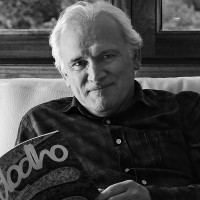 | Joxe Inazio Kuesta Garmendia PRO Excelente entrevista amigo Santiago. Acabo de leerla, y me alegra mucho saber un poco más de tí. Las fotos que presentas son geniales y entre ellas esa “ Waiting for a new day” que es extraordinaria. No me extraña que te dieran esa medalla de oro en el Trierenberg de este año.Y muchísimas gracias por la mención que me haces, que me ha encantado y emocionado. Un abrazo amigo mío. Muchísimas gracias a Yvette por esta estupenda entrevista. Excellent interview, my friend Santiago. I just read it, and I am very happy to know a little more about you. The photos you present are great and among them is that "Waiting for a new day" which is extraordinary. No wonder they gave you this gold medal at Trierenberg this year. And thank you very much for the mention you make of me, which has enchanted and excited me. A hug, my friend. Many thanks to Yvette for this great interview as well. |
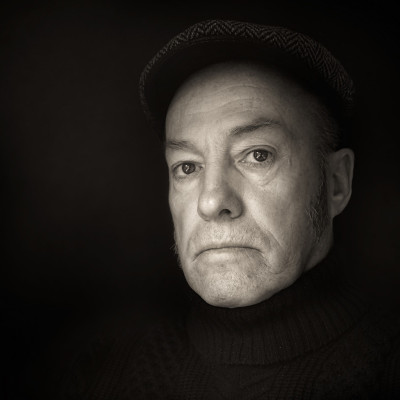 | Santiago Pascual Buye PRO Muchas gracias por tus palabras, Joxe Inazio. Siempre me han encantado tus fotografías y ese intimismo con el que las trabajas. Los alagos de un maestro como tú emocionan y mucho. Un fuerte abrazo, amigo. |
 | Teruhiko Tsuchida PRO Hello Santiago.
Amazing photos, great work. congratulations.
And it is a wonderful interview article. |
 | Santiago Pascual Buye PRO Thank you very much, Teruhiko. I'm glad you like it. |
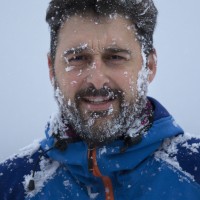 | David Martin Castan PRO Gran trabajo amigo, tu trabajo es inspirador. Un fuerte abrazo |
 | Santiago Pascual Buye PRO Muchas gracias David. Un fuerte abrazo |
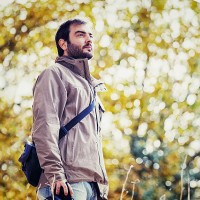 | Juan Pablo de Miguel ¡Fantástico trabajo Santiago (buena selección)! Y gracias por tu mención ;)
|
 | Santiago Pascual Buye PRO Gracias a ti, Juan. Un abrazo |
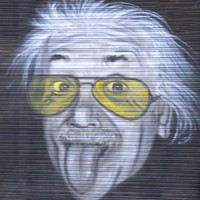 | Jose C. Lobato It cost me, to deny it. The English and I did not get along very well, but go if it was worth it. A great interview, and an unbeatable selection of photographs. Congratulations friend, you deserve it. Thank you also for remembering me and for including me in that group of such good photographers. And congratulations to Yvette for her always fantastic work. A hug.
Me ha costado, para que negarlo. El inglés y yo no nos llevamos muy bien, pero vaya si ha merecido la pena. Una entrevista genial, y una selección de fotografías inmejorable. Enhorabuena amigo, te lo mereces. Gracias también por acordarte de mi y por incluirme en ese grupo de tan buenos fotógrafos. Y enhorabuena para Yvette por su trabajo siempre fantástico. Un abrazo. |
 | Santiago Pascual Buye PRO Gracias Jose. Veo que adolecemos del mismo problema. Cómo no me iba a acordar de ti, faltaría más. Un abrazo bien fuerte y muchas gracias por tus palabras, amigo |
 | Yvette Depaepe CREW Thanks for your appreciation, Jose. It is a pleasure and so enriching to me to interview all the 1x photographers, dear friend! Cheers, Yvette
|
 | Santiago Pascual Buye PRO Many thanks to you, Yvette, for the hard work you are doing to get this magazine forward. Greatings.
|
 | Yvette Depaepe CREW Strong interview, Santiago! Your photographic skills cover such an incredible range of different styles. Thanks for revealing us more about you, my friend. Thanks too for your very nice collaboration. Cheers, Yvette |